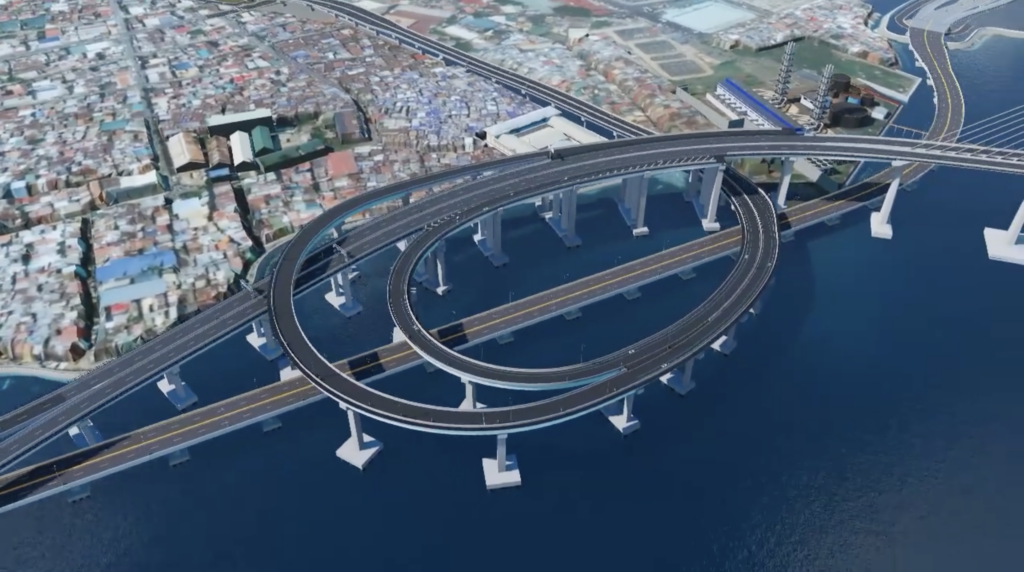
CCLEX-Guadalupe Ramp: A CAD-generated video, shared by the bridge operator (CCLEC) presents the planned development and how it would look like after its construction. | Screengrabbed from Sugboanon Channel / Youtube
CEBU CITY, Philippines – Cebuanos can anticipate a significant impact on Metro Cebu’s economy following a substantial investment increase by a unit of Metro Pacific Tollways Corp. (MPTC) in the construction of the Guadalupe ramp.
This ramp will connect the Cebu Cordova Link Expressway (CCLEX) to Barangay Guadalupe.
Initially projected at P1 billion last year, CCLEX Corp. (CCLEC) President and General Manager, Engineer Allan Alfon, now estimates the ramp project will cost between P5 to P6 billion.
“Construction will start mid-year and is expected to complete by the end of 2026,” Alfon said.
READ MORE:
CCLEX management eyes to start construction of bridge extension by 2024
CCLEX safety enhancements pushed after US bridge tragedy
MPTC unit targets to complete CCLEx Guadalupe ramp in 2026
In a report from Cebu City News and Information on April 17, Alfon noted that the project would utilize a cantilever design to support the ramp.
A cantilever beam is a structural element that extends horizontally and is supported only at one end. The unsupported end, known as the cantilever, projects beyond the support point.
The carriageway of the ramp will be 30 meters wide, featuring two lanes on each side, along with additional space for a bike lane and sidewalk.
Architect Joseph Espina, head of the City Planning and Development Office (CPDO), assured that the construction would not interfere with the flow of the Guadalupe River, as the supports would be placed beyond the three-meter easement.
“The construction will not only preserve the river’s flow but will also facilitate the resettlement of the communities along the river’s easement,” he added.
READ MORE:
The transformative impact of infrastructure on Philippine industrial real estate
Luzon-Samar bridge project pushed
These barangays include Pasil, Pahina San Nicolas, and Ermita, all situated along the Guadalupe River.
Espina said that several hearings had been held, particularly in Barangay Pahina San Nicolas, where the majority of the ramp’s landing and approach would be constructed.
All posts of the ramp will be erected on the Pasil side of the river.
Espina also mentioned that the construction would minimally affect existing structures. However, he assured that transitional housing would be available for families affected by the construction, and they would later be relocated to medium-rise buildings designed for socialized housing that the city planned to construct.
Upon completion, the ramp will allow travelers to bypass the lengthy stretch of the Cebu South Coastal Road on the South Road Properties.
Alfon concluded by noting that approximately 18,000 to 20,000 vehicles currently pass through the CCLEX daily.